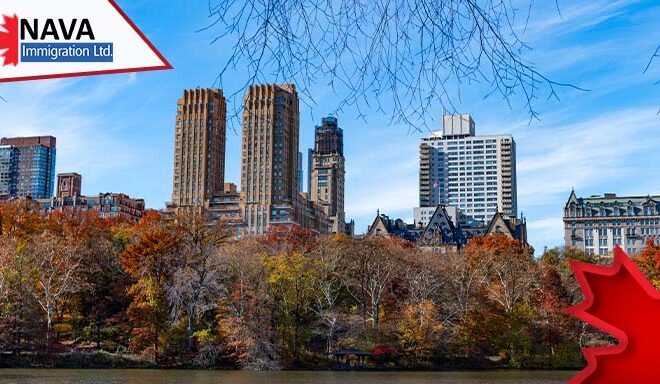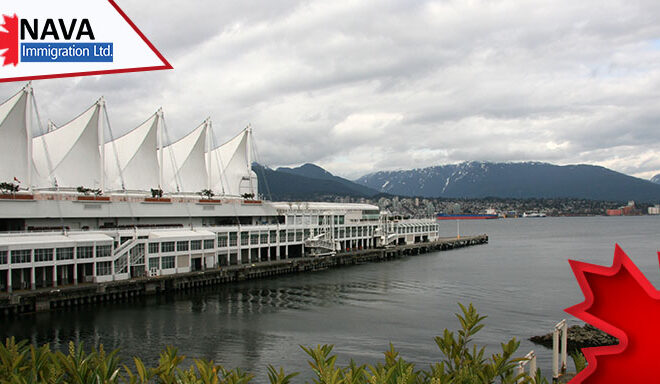Canada’s Open Work Permit for H-1B visa holders of the U.S. is available now
From now on, United States nationals who have an H-B1 specialty occupation visa may be able to apply to live and work in Canada.
Mr. Fraser, the immigration minister of Canada, on June 27 announced this measure with the objective of enhancing labor mobility in North America.
In both countries, Canada and the United States, numerous workers in the high-tech sector as well as their closely related family members, are expected to be impacted by strategy.
Applicants who receive approval will obtain an open work permit which will be valid for a maximum of three years. With an open work permit, individuals can work under any employer in Canada. This also includes their spouses and dependents, who are able to apply for study or work permit as required. According to the IRCC, Immigration, Refugees and Citizenship Canada, this measure will remain effective either for a year or until the target of 10,000 applicants is achieved. This target of 10,000 applicants only includes principal applicants and not family members.
Eligibility Requirements for Open Work Permit for H-1B visa holders
For Canada’s Open Work Permit for H-1B visa holders, Candidates must satisfy the following requirements:
- They must have a Valid H-1B specialty Occupation Visa; and
- They must presently live in the United States.
To apply for an Open Work Permit, Candidates require the followings.
- They need a copy of the existing H-1B Visa;
- They need a notice of action, form I-797/I797B. It’s a confirmation letter from the U.S. Government validating the H-1B application; and
- They need proof to testify that they reside in the U.S. It can be a document showing they live in the United States, an income tax report, a recent utility bill, an Arrival/Departure Record, or a Form 1-94.
IRCC focusing on STEM Occupations
The IRCC, on June 28, declared that the department would hold the first-ever STEM occupations-based Express Entry draw to invite candidates with work experience in Science, Technology, Mathematics, and Engineering occupations. This draw was a part of new category-based selection draws, which were introduced at the end of May by IRCC.
Afterward, the IRCC issued invitations to 500 candidates with work experience in STEM professions on July 5. Among them, many were also eligible for the new H-1B open work permit. Candidates who received invitations were already in the Express entry pool.
The five new Express Entry categories target candidates with work experience in specific occupations. The sixth new category targets candidates with high French Language proficiency.
IRCC selected the categories based on the research and discussion with IRCC partners and stakeholders. Also, the feedback from the provincial and territorial governments is also taken into account, who are more familiar with the local labor market shortages.
According to IRCC, inviting candidates via the Express Entry STEM category was a significant step in supporting Canada’s objective of enticing global talent as well as maintaining its leadership position in global research, development, and innovation. For instance, the Government of Canada, in its 2023 Budget, declared that it would invest $20 billion to support the development of major clean electricity and growth infrastructure projects. A significant portion of this development will need the skills and expertise of STEM professionals.
Tech Talent attraction strategy of Canada
The department of IRCC is efforting to create a new Innovation Stream, under the IMP, or International Mobility Program, in addition to the open work permit for H-1B holders for three years. Canada’s minister of immigration informed that the department is expecting to launch the new Innovation Stream by the end of 2023.
The two pathways for the new stream that are under development are the result of the feedback gathered in recent months via numerous consultations.The two proposals under consideration are as follows:
- Employer-specific work permits: The first proposal is the Employer-specific work permits, valid for a maximum of five years. It is for workers who will work for the organization managed by Canadian Government that is helping the country achieve its Industrial innovation goal.
- Open work permits: The second proposal is the Open Work Permit, valid for a maximum of five years. It is for highly skilled workers in specific in-demand professions.
Mr. Fraser further informed that for work permits under the Global Skills Strategy, the department is back on its 14-day service standard. It also announced Canada’s promotion as a destination for digital nomads, enhancements to the start-up visa Programs like allocation of more spots, and extension of work permit from one to three years.
Job Vacancies in Canada under STEM Category
According to the most recent data from Statistics Canada, in April, there were around 42,900 vacant job positions in professional, scientific, and technical services.
This was a decrease of 7,700 (-15.2%) from the month of March and a decrease of 30,600 (-41.6%) from the peak of 73,600 in April 2022.
Quebec and Ontario still have the maximum number of vacancies across the country. Ontario recently removed the requirement of Canadian work experience for candidates seeking engineering licensure to fill these vacant positions, especially in the STEM sector.
The Ministry of Labour, Immigration, Training and Skills Development of Ontario, on June 30, also declared that within six months, the regulated professions in the province will need to make and express the registration decision on applications from the foreign-trained newcomers. This effort was to facilitate the process for talented immigrants to fill job vacancies and reduce the skill gaps, particularly in licensed professions like professions under the STEM sector.





